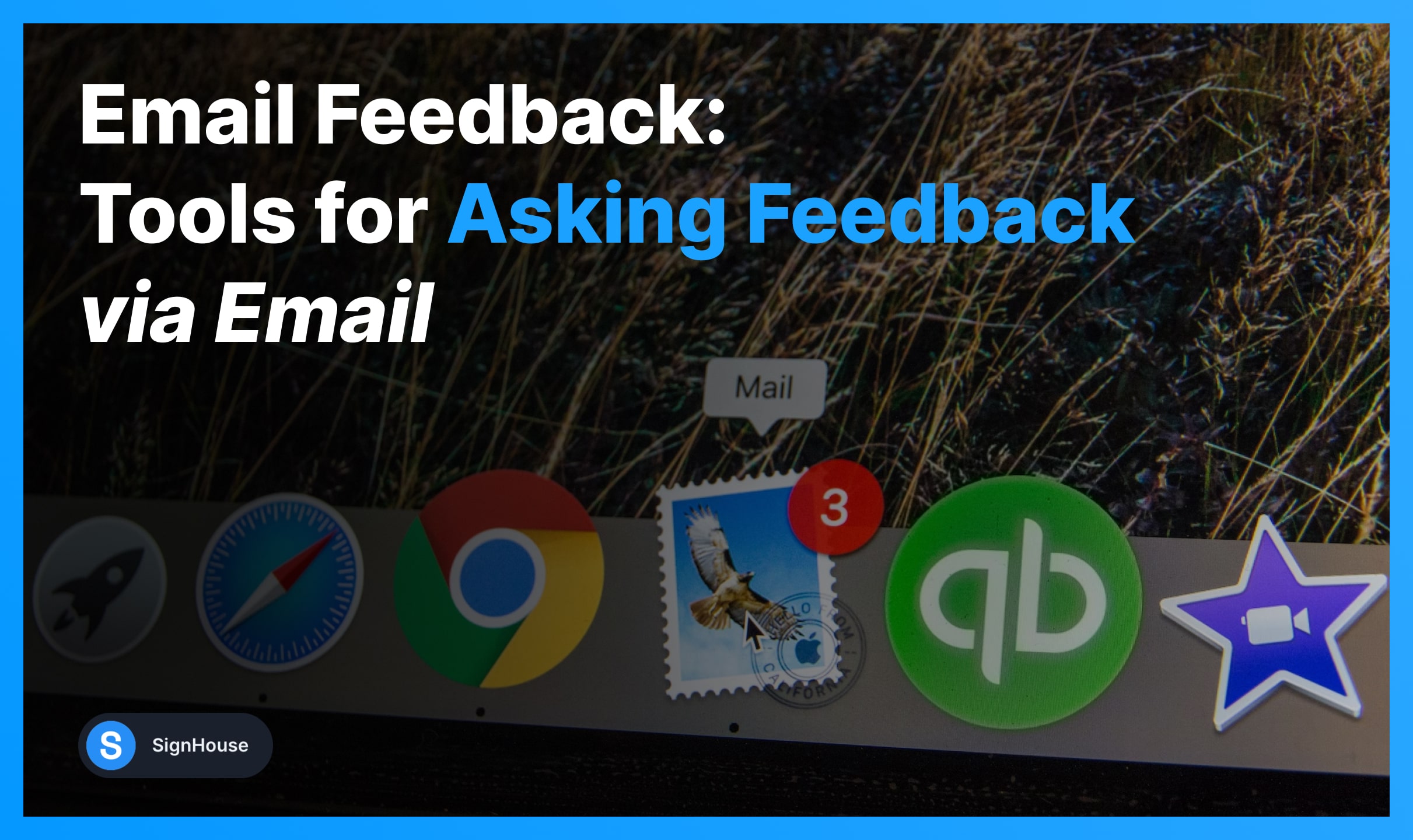Email Feedback: Tools for Asking Feedback via Email

Currently, email has one of the highest response rates (of up to 25%).
You can collect email feedback in multiple forms such as an embedded widget or an external link to the survey. Subscribers can participate in the survey as per their convenience. You can run email feedback campaigns on complete autopilot.
Result?
You get to know your customers (and audience) better. You understand their likes, dislikes, preferences, challenges, and much more. You can use data in buyer personas, advertising campaigns, marketing campaigns, and product development.
For example, the results of a customer survey revealed that most customers found your product via Twitter. You need to run Twitter ads and up your Twitter marketing game for lead generation.
What is Email Feedback?
It is an email that collects feedback from subscribers. The feedback can be either qualitative or quantitative. You can use widgets in the email or send links to external survey sources. There are several ways to collect feedback via email such as newsletter, embedded widget, sales email, etc.
There are several features of email feedback that make it superior to other types of feedback collection techniques:
- Email feedback is non-intrusive. The subscribers have allowed you to send emails, your feedback email doesn’t appear to be disturbing.
- It is convenient for subscribers to participate in the survey as per their convenience. Even if they can’t participate in the survey instantly, they can check email later and participate when they have time. This convenience isn’t available with other types of feedback.
- Emails are more personalized since you have the personal details of the subscribers. This makes email surveys highly personalized. It increases the response rate to a great extent.
- Feedback emails are responsive. If you are using a customer feedback tool, you’ll have to check with the provider if its email widget is responsive. Most of the feedback tools in the market have mobile-friendly widgets.
How to Write a Feedback Email?
The email copy and subject are the two most critical constituents of a feedback email. A well-written email will persuade subscribers to participate in the survey. Simply sending an email with a link to a survey or embedded survey won’t work. Follow these steps to write an exceptional feedback email:
1. Write a Catchy Email Subject
The email subject is the first thing that your subscribers read and decide if they should open or delete it. As much as 47% of subscribers open emails based entirely on the subject line and emails having 6–10 words in the subject have a high probability of getting opened.
Here are a few actionable tips on writing better email subject lines for your feedback email:
- Keep it short and between 6 and 10 words
- Keep it personalized as personalization improves open rate by 22.2%
- Use name in the subject line
- Describe the purpose of the email in the subject line with a twist
- Using emojis in the subject line increases the open rate by 56%.
2. Keep Email Copy Short
Focus on the email copy. Keep it short and interesting. The copy must be persuasive yet personalized. If you have an inhouse template, follow it.
The email copy should have:
- Clear introduction
- Body (describes the purpose of the email)
- Ending
- Link to the survey
3. Describe What the Survey is For
You need to tell subscribers what the survey is about, why you need their input, what’s in it for them, how you plan to use survey findings, and why they should participate in it.
The more questions you answer, the better.
When a customer receives an email for feedback, the first question is my opinion doesn’t matter. You need to clearly state how every single opinion matters.
Try sharing historical changes that you made in the produce and UX based on surveys. This will motivate them to participate in the survey and they’ll be more likely to share honest feedback.
4. Offer Incentive
No matter how motivated, a good chunk of your subscribers won’t take the pain to even click the feedback link. You need to offer an incentive to boost the response rate.
An incentive is a token of appreciation and a way to compensate your customers for their time. Incentive must be valuable (e.g. discount coupons, free shipping, etc.).
5. Add a CTA
A call to action is one of the most important components of an email copy. Add 2-3 powerful CTAs to the survey. The CTAs should be descriptive and clear.
Conclusion
Email feedback is essential for your business’s growth. Any type of customer feedback is vital for improvement, but email feedback is special in the sense that you are expected to receive unbiased opinions. Subscribers can participate in the survey whenever they want, they aren’t in any hurry, so responses are (mostly) unbiased.
The tool you use for feedback collection plays a significant role in how easy (or hard) it will be for the customers to participate in the survey.








